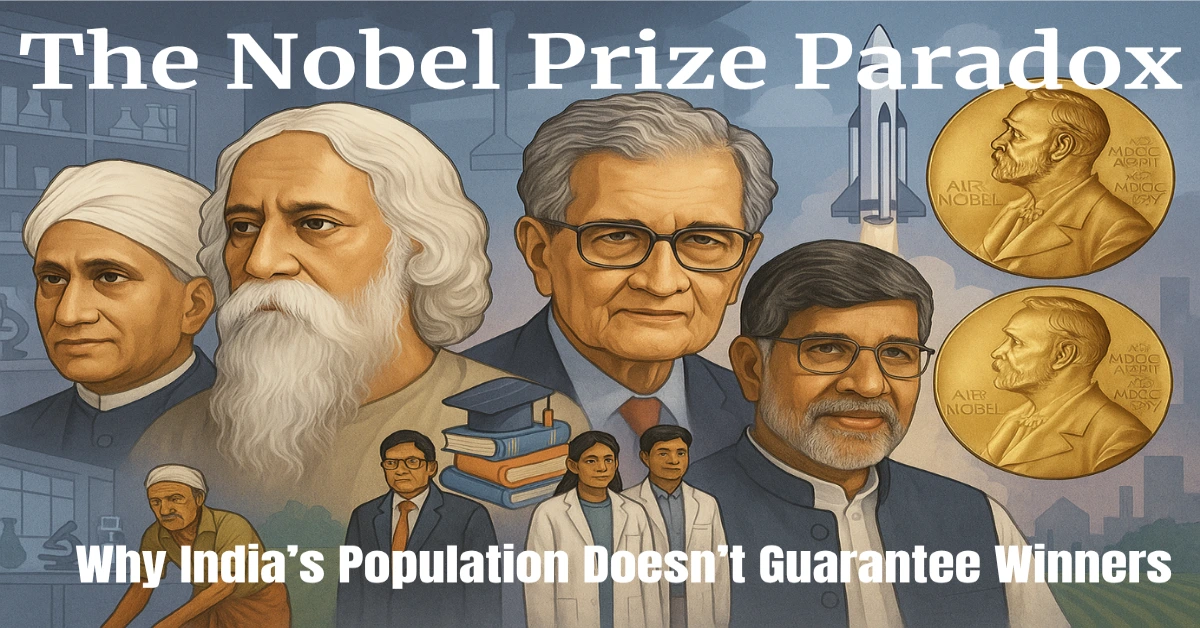“Imagination is more important than knowledge.” – Albert Einstein
Nobel Prize 2025: The Nobel Prize Committee will soon announce the Nobel Prize 2025 laureates. The Prize, established in 1901 by Alfred Nobel, is regarded as the highest recognition of human achievement in science, literature, peace, and economics.
With more than 1.4 billion people, a growing economy, and a deep cultural legacy, one might assume India would consistently produce Nobel laureates. Yet, the reality is striking, India’s Nobel tally remains surprisingly small compared to its size and potential.
This paradox raises a crucial question: Why has India not won more Nobel Prizes despite its huge population?
In this article, we explore historical, structural, and cultural reasons behind this gap, while also considering the future prospects of India on the Nobel stage.
| The Nobel Prize 2025 announcements begin in early October, starting with medicine and physiology and ending with economics a week later. Each award carries not only international recognition but also a prize amount of 11 million Swedish crowns (about $1.2 million). |
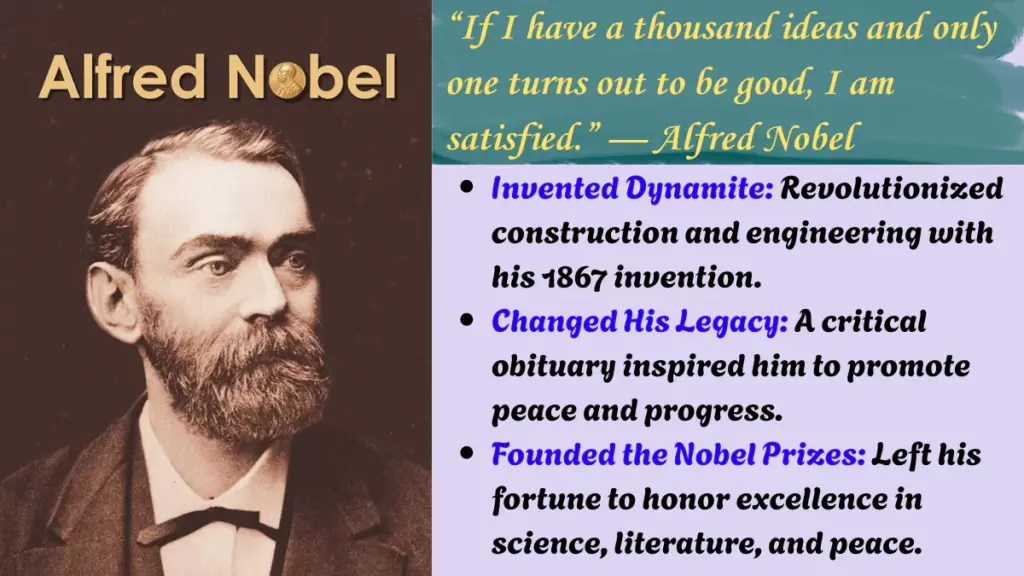
Nobel Prize winners from India
Before diving into the reasons, let us look at India’s Nobel history.
Nobel Prize Winners from India (by citizenship at the time of award)
- Rabindranath Tagore (1913, Literature): First Asian Nobel laureate.
- C.V. Raman (1930, Physics): For the discovery of the Raman Effect.
- Mother Teresa (1979, Peace): For her humanitarian work in Kolkata.
- Amartya Sen (1998, Economics): For contributions to welfare economics.
- Kailash Satyarthi (2014, Peace): For fighting child labour and promoting child rights.
“Ask the right questions, and nature will open the doors to her secrets.” – CV Raman
Indian-born Nobel Laureates (who later became foreign citizens)
- Har Gobind Khorana (Medicine, 1968)
- Subrahmanyan Chandrasekhar (Physics, 1983)
- V.S. Naipaul (Literature, 2001)
- Venkatraman Ramakrishnan (Chemistry, 2009)
- Abhijit Banerjee (Economics, 2019)
While Indians have achieved global recognition, many laureates have won after emigrating, raising concerns about brain drain and missed opportunities.
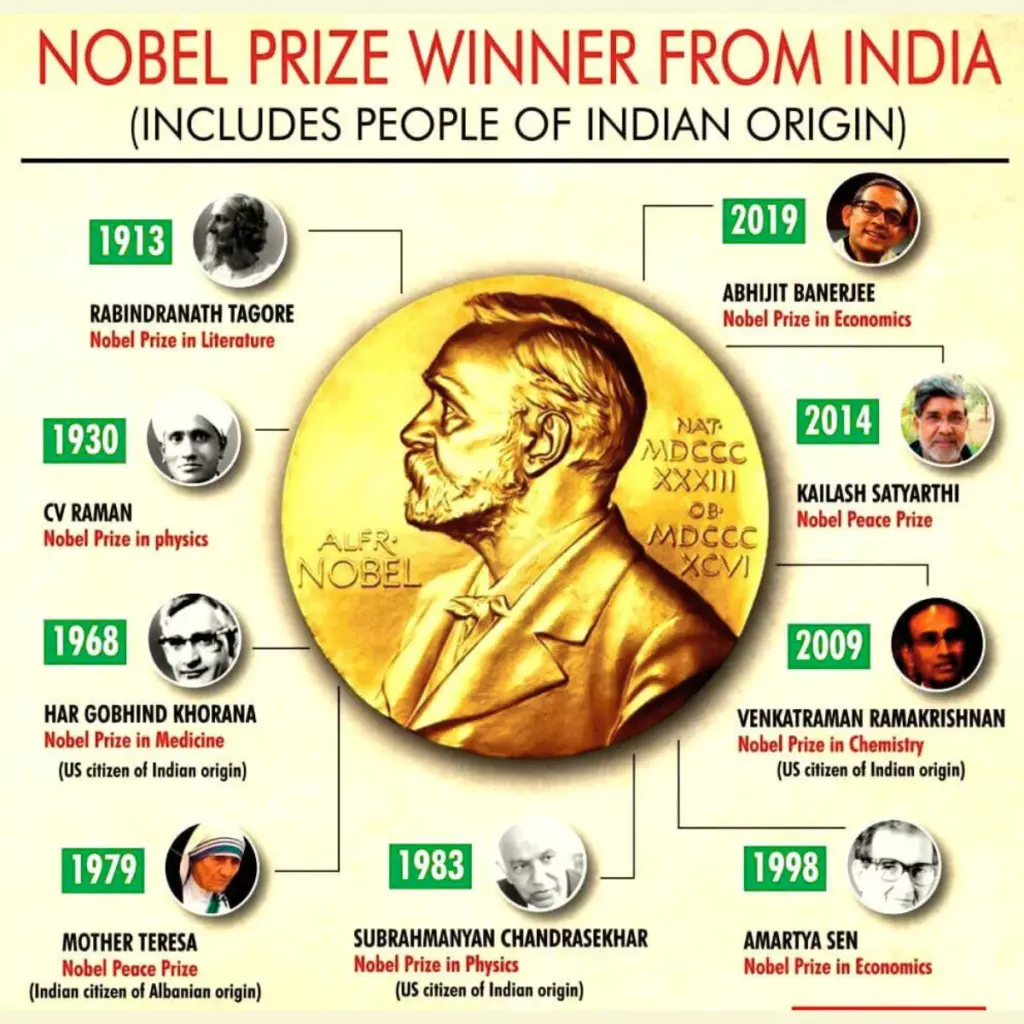
Why Has India Not Produced More Nobel Laureates?
Underfunding of Research and Development
- India spends less than 0.7% of its GDP on R&D, compared to 2-4% in countries like the US, China, and South Korea.
- Limited funding means fewer labs, inadequate infrastructure, and a lack of long-term research culture.
- Many Nobel-winning discoveries require decades of sustained investment, something India struggles to provide.
Read Also: Top 7 Research Opportunities for Medical Students in India
Brain Drain
- A large number of Indian-origin Nobel laureates achieved their breakthroughs outside India.
- For example, Har Gobind Khorana and Subrahmanyan Chandrasekhar did their Nobel-winning work in the US.
- Indian institutions often fail to retain talent due to lower salaries, bureaucratic hurdles, and a lack of cutting-edge facilities.
| “The scientific approach, the adventurous and yet critical temper of science, the search for truth and new knowledge, the refusal to accept anything without testing and trial, the capacity to change previous conclusions in the face of new evidence, the reliance on observed fact and not on pre-conceived theory, the hard discipline of the mind, all this is necessary, not merely for the application of science but for life itself and the solution of its many problems.” – Jawaharlal Nehru, The Discovery of India |
Bureaucratic and Academic Red Tape
- Indian universities often prioritise seniority over innovation.
- Research grants are often delayed due to bureaucratic issues.
- Young scientists and researchers struggle to get independence, unlike in Western universities, where innovation is encouraged early.
Focus on Quantity, Not Quality
- India produces a large number of engineers, doctors, and PhDs every year, but much of this education is exam-oriented.
- Instead of encouraging original research, the system emphasises rote learning.
- As a result, very few breakthrough ideas emerge from Indian institutions.
“Try not to become a man of success, but rather try to become a man of value.” – Einstein
Limited International Collaboration
- Nobel prizes often go to scientists who are part of global research collaborations.
- Indian researchers are still underrepresented in international projects like CERN or large-scale genomics programs.
- Language barriers and lack of exposure also reduce visibility.
Socioeconomic Priorities
- For decades, India’s priority has been poverty alleviation, infrastructure, and basic healthcare rather than high-end scientific research.
- While these are vital, they leave fewer resources for long-term fundamental research that often leads to Nobel-level discoveries.
Read Also: UN Study on Career Counselling Gap: Can NEP 2020 Fix This? Only 1 in 10 Students Get Guidance!
Recognition Lag and Bias
- Several Indian scientists are believed to have made Nobel-worthy contributions but were ignored.
- Jagadish Chandra Bose (pioneering work in radio waves) lost out to Marconi.
- Meghnad Saha (ionisation theory) was nominated but never awarded.
- Satyendra Nath Bose (Bose-Einstein statistics) was overlooked, though Einstein himself acknowledged his work.
- Many argue that Eurocentric biases in early Nobel history sidelined Asian scientists.
Weak Research Culture in Social Sciences and Literature
- In fields like Literature, Economics, and Peace, India has produced only a handful of laureates.
- While India has a vast literary tradition, international recognition has been rare.
- Similarly, social science research remains underdeveloped compared to Western universities.
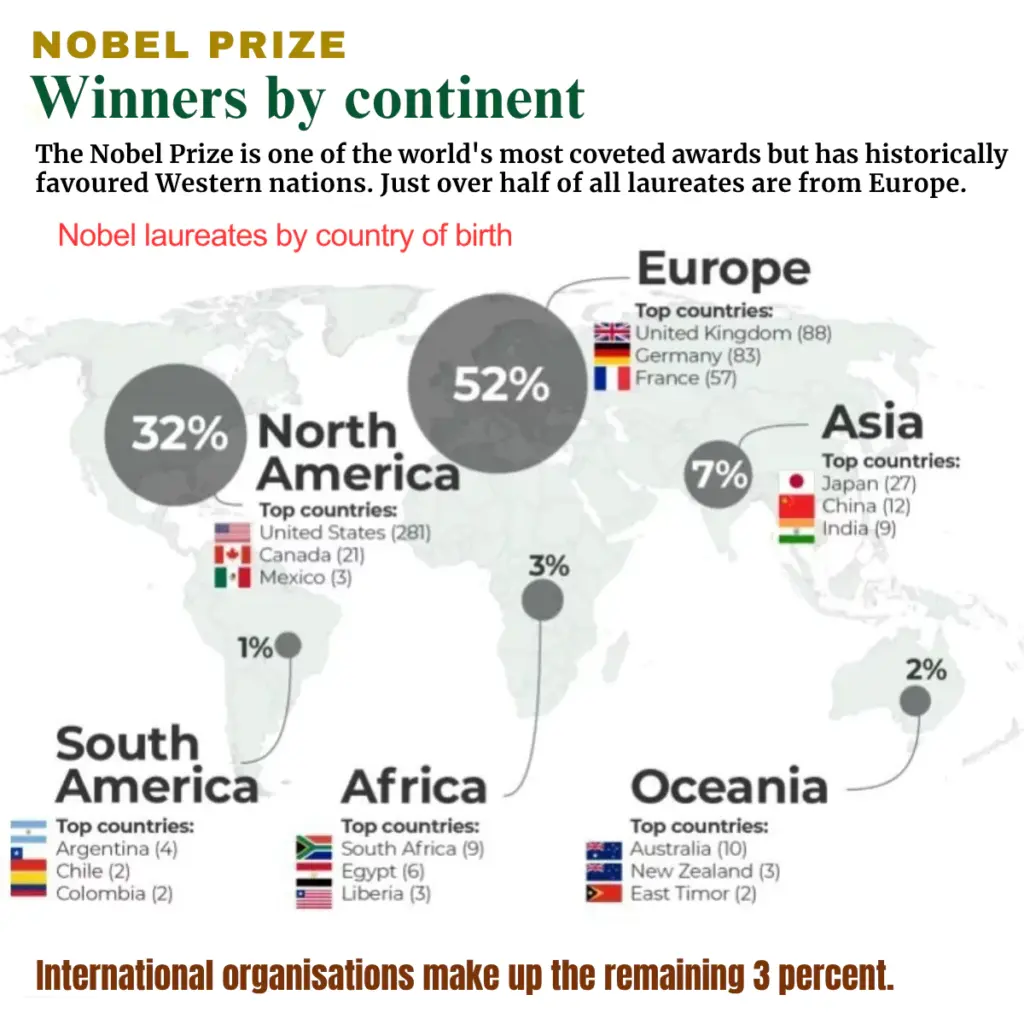
Nobel Prize and India’s Population Paradox
One might assume that a large population increases the chances of Nobel winners. However, population alone does not guarantee innovation.
- Quality vs. Quantity: Nobel prizes reward excellence, not numbers. Even smaller countries like Sweden, Switzerland, and Israel have produced more Nobel laureates per capita.
- Education Gaps: A significant portion of India’s population still struggles with basic literacy, limiting the talent pool for high-level research.
- Inequality: Talented students from rural or poor backgrounds often lack the resources to reach global research platforms.
Thus, India’s demographic strength has not yet translated into Nobel-worthy output.
“Innovation is not merely about creating something new but about improving the way we live.” – Narendra Modi, Prime Minister of India
What Can India Learn from Other Countries?
China’s Rapid Rise
- Like India, China had few Nobel laureates in the 20th century.
- After massive investment in R&D, higher education, and global collaboration, Chinese scientists now play leading roles in global research.
Small Countries, Big Achievements
- Countries like Sweden, Switzerland, and Israel, despite small populations, focus on innovation ecosystems, giving young researchers independence.
- They provide high funding per researcher and encourage global networking.
India can learn from these examples by combining strong domestic policies with international exposure.

Can India Produce More Nobel Laureates in the Future?
Positive Signs:
- Growing Investments: Initiatives like PM Research Fellowships, Atal Innovation Mission, and Startup India are promoting innovation.
- ISRO & Space Achievements: Missions like Chandrayaan-3 and Mangalyaan show India’s potential in global science.
- Medical and Biological Research: India’s role in vaccine development (Covaxin, Covishield) during the COVID-19 pandemic was globally recognised.
- Social Movements: Activists like Kailash Satyarthi show India’s continuing impact on peace and human rights.
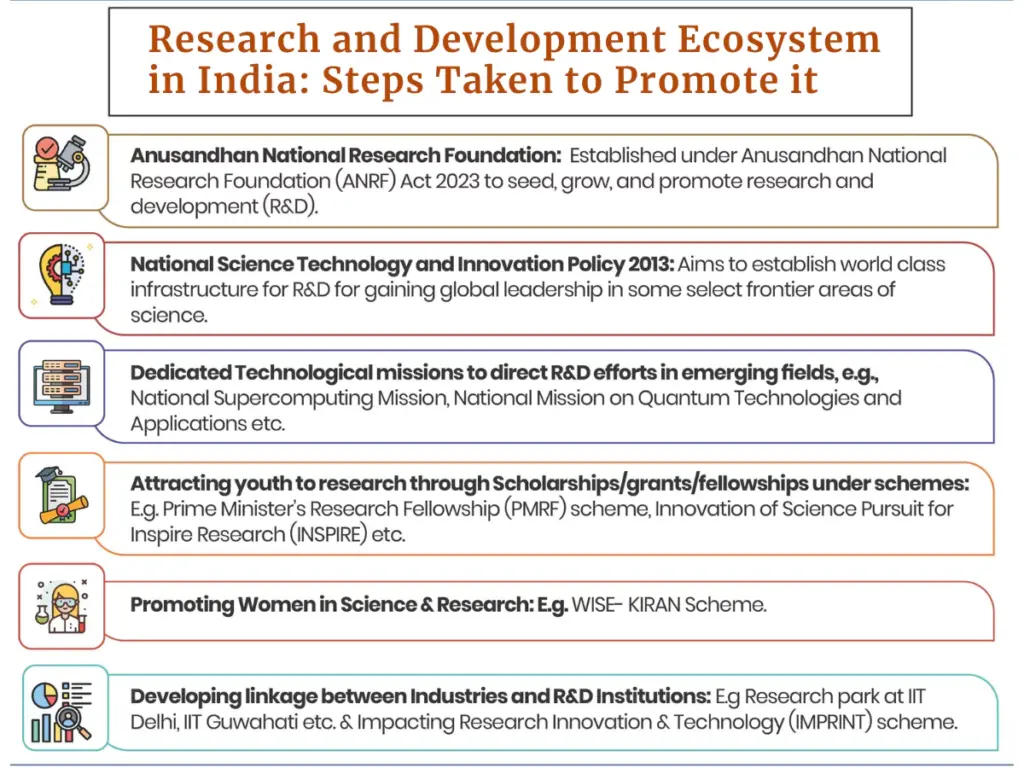
Dr Vikram Sarabhai (Father of the Indian Space Program)
“We do not have the fantasy of competing with the economically advanced nations but we are convinced that if we are to play a meaningful role nationally and in the community of nations, we must be second to none in the application of advanced technologies.”
Challenges:
- India must increase R&D funding to at least 2% of GDP.
- Academic reforms are needed to reduce bureaucracy and encourage young talent.
- More collaboration with international research hubs is crucial.
If these steps are taken, experts believe India could see more Nobel laureates in the next few decades.
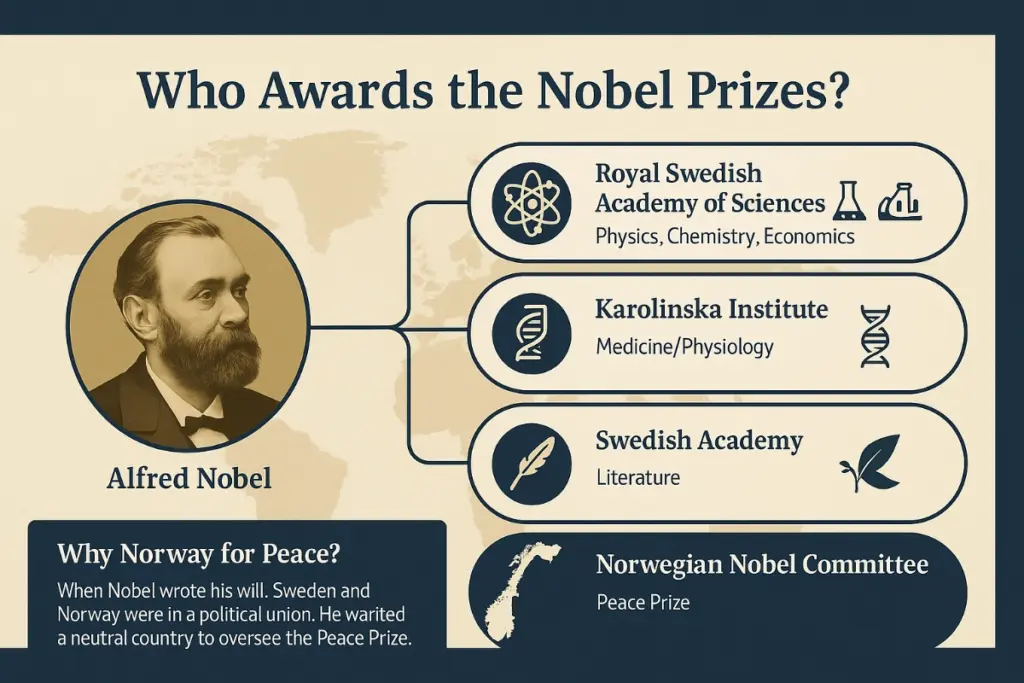
The question of why India has not won more Nobel Prizes despite its huge population is complex. It is not about a lack of talent. India has produced some of the finest minds in science, literature, and humanitarian work.
The real issues lie in systemic underfunding, brain drain, bureaucratic hurdles, and weak research ecosystems.
However, with recent progress in science, technology, and global collaboration, the tide may be turning.
If India combines its demographic strength with world-class education, research funding, and innovation culture, the next century could see India emerge not just as a participant but as a consistent Nobel powerhouse.
Read This Article on LinkedIn!

